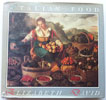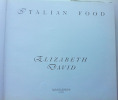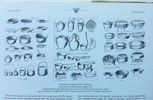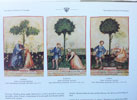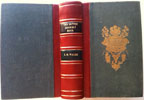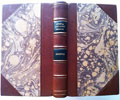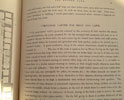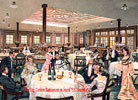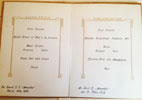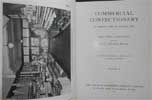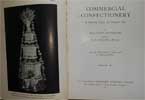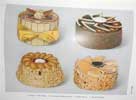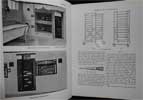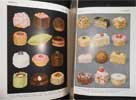Henderson.
William Augustus
THE HOUSEKEEPER’s INSTRUCTOR:
OR, UNIVERSAL FAMILY COOK, BEING AN AMPLE AND CLEAR Display of the ART OF COOKERY IN ALL ITS VARIOUS BRANCHES.CONTAINING PROPER DIRECTIONS for DRESSING all Kinds of Butcher’s Meat, Poultry, Game, Fish, &c. ALSO, THE Method of preparing Soups, Hashes, and Made Dishes; WITH The whole Art of Confectionary, Pickling, Preserving, &c. LIKEWISE The making and keeping in Perfection British Wines; AND PROPER RULES FOR BREWING MALT LIQUOR, as well for Family Consumption as the Regale of private Visitants.. TO WHICH IS ADDED, The Complete Art of Carving, ILLUSTRATED WITH ENGRAVINGS, Explaining by proper References, the Manner in which Young Practitioners may acquit himself at Table with Elegance and Ease. ALSO, BILLS OF FARE FOR EVERY MONTH OF THE YEAR. With COPPER-PLATES displaying The Manner of decorating a Table; DIRECTIONS FOR MARKETING, AND THE MANAGEMENT OF THE KITCHEN AND FRUIT-GARDEN. The whole formed on so NEW a PLAN, that the Inexperienced will be instructed, and the professed Cook will receive that Information which has never been known by any previous Publication. THE FIFTH EDITION. By WILLIAM AUGUATUS HENDERSON, Who has made the Culinary Art his Study for upwards of Forty Years. LONDON: PRINTED AND SOLD BY W. AND J. STARTFORD, No. 112, HOLBORN-HILL.
Large 8vo. 1fep. [1] An interesting Frontispiece with an engraving of a kitchen scene and a Butler instructing an apprentice in the Art of Carving and a Lady presenting her servant with a copy of the Universal Family Cook. [1] 3-4 Introduction. 5-448.16 pages Index. 1fep. Seven engraved plates illustrating carving, plus four plates, (two folding) showing table settings, as called for. Original dark brown calf boards with rubbed corners. Sympathetically re-laid spine with raised bands, and two calf labels with gilt lettering and lines. The text block very clean with very slight dusting in places. Overall a very good copy.
-
An early edition of Henderson's book. All early copies are uncommon. The first was issued 1971. This one is the fifth Edition of 1793. It is obvious that Henderson's book was very popular, publishing the 2nd, 3rd & 4th editions within 2 years of the 1st and 5th editions. How many of each edition was printed is nigh impossible to ascertain, but Henderson's successful book ran to many editions and after his death, and to quote the title page verbatim - "CORRECTED, REVISED, AND CONSIDERABLY IMPROVED, By every modern Addition and Variation in the Art, By JACOB CHRISTOPHER SCHNEBBELIE, LATE APPRENTICE TO MESSRS, TUPP AND PERRY, Oxford-Street; afterwards PRINCIPAL COOK AT MELUN’S HOTEL, BATH; AND NOW OF THE ALBANY, LONDON". Schnebbelie took up the 12th edition and continued until at least the 17th edition. In her bibliography the ever-frustrating MacLean dismisses Simon's p.81 claim, that this cookery book was probably the most popular of the late eighteenth century, and she further states negatively, it is a 'bold assertion'. Bold or not, the 10th edition of c1800 proves the overwhelming popularity a book that runs to ten editions in nine years and is then taken up by another famous cook and subsequently runs to another seven editions at least. The other unusual fact that cannot be dismissed lightly, is that Schennbelie even kept Henderson's name in the title page before his own. One cannot see that if the book continued to be anything less than hugely popular, Schennbelie would have persisted with Henderson's name on the title page. Because of the great scarcity of all early editions, one has to conclude that limited numbers of each edition were issued.






|
|

Antiquarian category
ref number:
11208
|
